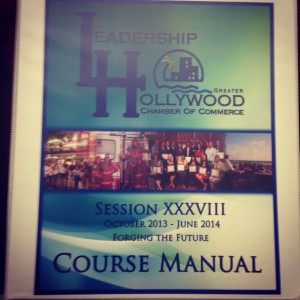My wife and I are always telling our kids how important it is to be thankful for our family and everything we have in our daily lives. However, I know the reality of the daily routine makes it very easy to lose sight of the fact that there are those less fortunate right here in our community. This was never more evident to me than after my latest session in Leadership Hollywood Class 38. The Health and Human Service Day is an opportunity to highlight the scope of services the City of Hollywood offers in the area of Healthcare and social services.
We visited several facilities within the Memorial Regional Hospital system and different non-profit social service facilities in Hollywood including: 1) Meyerhoff Senior Center; 2) Lucanus Developmental Center; and 3) Broward Outreach Center. Having the opportunity to visit these facilities provided a stark reality check into the needs and challenges facing these social service providers.
The Meyerhoff Senior Center has been providing programs and services for older adults in Hollywood for over 30 years. The Senior Center offers a wide arrange of services including recreation, health support services, Adult Day Care program, and an Alzheimer’s disease Initiative. The facilities includes meeting rooms, an art studio, a stage, library and kitchen. I am very excited to be currently involved in organizing a fund raising event for Meyerhoff Senior Center through Leadership Hollywood.
The Lucanus Development Center is a facility dedicated to providing care and services to persons with development disabilities. The organization began as a Sunday school program for developmentally disabled adults and has grown over the past 40 years to its current facility in Hollywood. The facility offers various day programs which include a karate and drama program which performs throughout the community. The program also provides surrogate homes and field trips throughout the State of Florida.
Finally, we toured the Broward Outreach Center which personally was the biggest eye opener. The facility assists homeless people beyond simple food and shelter. The most disheartening part of the tour was hearing about the number of families currently staying the facility. The Center provides an impressive residential program which provides food, substance abuse treatment, education, computer literacy, job placement, healthcare, spiritual development, and housing.
Each of these excellent facilities are non-profit organizations which are currently in the need of volunteers and financial donations. I am working using my involvement in Leadership Hollywood to spread the word and help support social services in our community.


